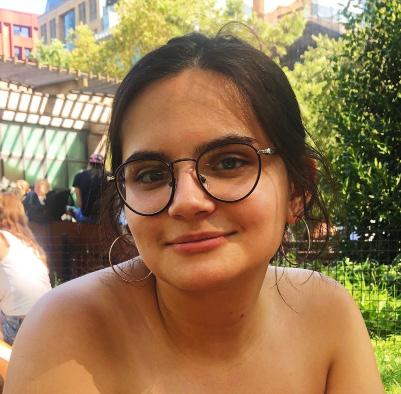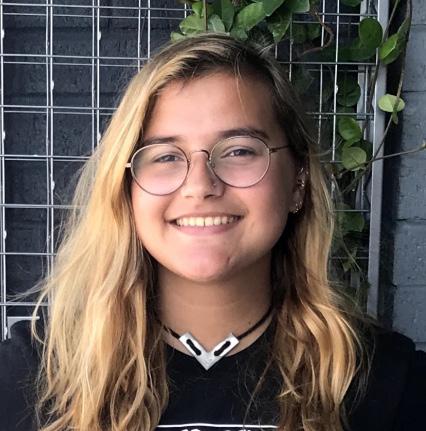
19 minute read
Effects of Minority Stress on Lesbian, Bisexual, Transgender, and Queer People of Color
Effects of Minority Stress on Lesbian, Bisexual, Transgender, and Queer People of Color
Julia Leschi
Advertisement
Research has repeatedly found that members of oppressed social groups (e.g., sexual or racial/ethnic minorities) have worse mental health outcomes than their dominant counterparts (Dhejne et al., 2016; Hendricks & Testa, 2012; Meyer, 2003; Paradies et al., 2015; Pieterse et al., 2012; Williams & WilliamsMorris, 2000). For example, African American adults are 20% more likely to report high levels of psychological distress than White adults, while Latina teenagers are more likely to attempt suicide than their non-Hispanic White counterparts (Centers for Disease Control and Prevention [CDC], 2019). Similarly, lesbian, gay, bisexual, transgender, and queer (LGBTQ) adults are three times more likely to report suicidal ideation than heterosexual adults (CDC, 2016), with 40% of transgender adults having attempted suicide in their lifetime, compared to 5% of the general population (James et al., 2016). Minority stress theory has been applied to explain these differences, positing that stigma, prejudice, and discrimination directed at minority groups create a hostile and stressful environment which leads to mental health problems (Meyer, 2003). Minority stress includes distal stressors (e.g., workplace and housing discrimination, microaggressions), objective events that are visible in the environment to an outside observer, and proximal stressors (e.g., self-stigma, identity concealment, expectation of rejection), which arise secondary to distal ones and have been defined as the internalization of negative messaging and attitudes projected by others (Hendricks & Testa, 2012; Meyer, 2003; Ramirez & Paz Galupo, 2019). Although the literature on minority stress has mostly focused on LGBTQ, as well as ethnic and racial minority (i.e., people of color) , individuals (Paradies et al., 2015; Pieterse et al., 2012), it has typically explored the relation between a single minority identity and poor mental health outcomes. Less attention has been given to how minority stress affects LGBTQ individuals who also belong to racial/ethnic minority groups. Some have hypothesized that the intersection of these two identities amplifies the risks of exposure to discrimination leading to minority stress and, therefore, alters the processes through which one is affected by it; however, others suggest this intersection might lead to resilience as a result of LGBTQ people of color’s prior experiences with discrimination (Ching et al., 2018; Ramirez & Paz Galupo, 2019; Rodriguez-Seijas et al., 2019; Rosenfield, 2012). Hence, the present literature review explored the following question: How does minority stress impact the mental health of LGBTQ people of color?
Excess Risks and Mental Health Outcomes
Having multiple minority identities exposes LGBTQ people of color to both racist and heterosexist microaggressions, leaving them susceptible to excess minority stress (Balsam et al., 2011; Szymanski & Sung, 2010). This specific vulnerability has been termed the “double-jeopardy” hypothesis, which posits that the intersection of two marginalized identities leads to a double health disadvantage (Dowd & Bengston, 1978). Research studying LGBTQ people of color has found that they suffer from negative mental health outcomes such as general psychological distress, increased anxiety, and depressed mood at a higher rate than their heterosexual and cisgender counterparts (Diaz et al., 2001; Szymanski & Sung, 2010). Such outcomes are seen as a consequence of social discrimination, unique tensions between their sexual/gender identity, and the perceived heterosexist and cissexist norms of their ethnic or racial community (Consolacion et al., 2004; Diaz et al., 2001; Szymanski & Sung, 2010). Indeed, minority stress factors can be perceived differently based on one’s own cultural beliefs and the messaging from one’s environment (Ramirez & Paz Galupo, 2019; Sarno et al., 2015). Presently, LGBTQ people of color report being discriminated against in both of their communities, having to deal with heterosexism, homophobia, or transphobia within their racial/ethnic groups, while dealing with racism and fetishization in LGBTQ spaces (i.e., social and political spaces catering specifically to an LGBTQ population; Balsam et al., 2011; Consolacion et al., 2004; McConnell et al., 2018; Ramirez & Paz, 2019; Szymanski & Sung, 2010). LGBTQ spaces give queer individuals the opportunity to be true to themselves, as well as find support and community; however, when LGBTQ people of color experience racism in these spaces, they are isolated from a source of support more accessible to White LGBTQ people (Gieseking, 2016).
Additionally, queer people of color face communityspecific struggles in their home environments, such as clashes between traditional cultural norms and queer identity (Balsam et al., 2011; Ching et al., 2018; Noyola et al., 2020). These situations can trigger a conflict in allegiance, which has been defined as a perceived incompatibility between one’s racial and ethnic and sexual orientation identities, and leads to psychological distress (Sarno et al., 2015). Specifically, conflicts in allegiances are positively correlated with experiences of racism in LGBTQ spaces and heterosexism from family (Sarno et al., 2015), highlighting the negative effects of this double-sided rejection. Moreover, conflict in allegiance levels are highest among those with high racial/ethnic behavioral engagement and low sexual orientation behavioral engagement, leaving them more likely to suffer from poor mental health (Sarno et al., 2015). This suggests that strong identification and engagement with the LGBTQ community could mediate the extent to which distress caused by conflicts in allegiances develop (Ching et al., 2018; Sarno et al., 2015).
These findings, in keeping with minority stress theory, confirm that alienation from one’s community because of identity factors is harmful to mental health, leading to greater psychological distress and internalized stigma (Meyer, 2003; Sarno et al., 2015; Szymanski & Sung, 2010). They also emphasize the importance of LGBTQ people of color having access to welcoming LGBTQ spaces to reduce the effects of this double-minority stress (Balsam et al., 2011; Cyrus, 2017). However, LGBTQ people of color often face a dearth of resources catering to the particular needs resulting from their intersecting identities, or are faced with barriers to access, leaving them further vulnerable to the effects of minority stress (Balsam et al., 2011; Cyrus, 2017; McConnell et al., 2018; Ramirez & Paz, 2019).
Resilience
Despite their increased exposure to discrimination, LGBTQ people of color do not consistently present with more compromised mental health than their White counterparts, challenging the double-jeopardy hypothesis (Rosenfield, 2012). In addition, Black LGBTQ adults have repeatedly been found to have a lower prevalence of mental health disorders than the rest of the LGBTQ population, despite their higher exposure to discrimination and adversity, suggesting higher resilience (i.e., ability to address adversity; Rodriguez-Seijas et al., 2019; Rosenfield, 2012). The resilience hypothesis posits that individuals who experience racism from a young age are better prepared to deal with later heterosexist microaggressions, partly because of the benefits derived from community-based resilience (i.e., community resources and connectedness; Rodriguez-Seijas et al., 2019; Rosenfield, 2012). The apparent protective effects of racial/ethnic minority belonging against poor mental health for LGBTQ individuals further challenge the double-jeopardy hypothesis and the perception of minority stress as being additive, showing instead that the experience of discrimination in one aspect of life can mitigate the outcomes of further discrimination (McConnell et al., 2018, Rosenfield, 2012).
Similarly, strong identification with the LGBTQ community reduces the effects of minority stress and leads to better mental health outcomes in LGBTQ individuals, irrespective of race/ethnicity (McConnell et al., 2018; Sarno et al., 2015). However, LGBTQ people of color report seeking out primarily intersectional community spaces, which are more attuned to the needs of multiple minority individuals and facilitate identification to a queer community of color (McConnell et al., 2018; Sarno et al., 2015). Interestingly, research has found antiLGBTQ stigma less damaging to people of color’s identification with the LGBTQ community than to that of White LGBTQ individuals (Ramirez & Paz Galupo, 2019 ; Sarno et al, 2015). These findings suggest that anti-LGBTQ stigma leads to greater rejection of LGBTQ affiliation in White people than in people of color, which could be explained by previous reports that people of color have stronger community and familial orientations than White people (Gaines et al., 1997; McConnell et al., 2018). This hints at another process through which double-minority status surprisingly protects LGBTQ people of color’s mental health (Consolacion et al., 2004; Rodriguez-Seijas et al., 2019), challenging the double-jeopardy and minority stress hypothesis.
Conclusion
LGBTQ people of color are surprisingly resilient to the effects of minority stress due to heterosexism (Rodriguez-Seijas et al., 2019; Rosenfield, 2012). Yet, their multiple minority identities put them at higher risk of exposure to discrimination and adverse events, placing a strain on their capacity to bounce back from these societal attacks (Meyer, 2003; Rodriguez-Seijas et al., 2019). The resources that LGBTQ people of color typically use to develop their resilience are different than those used by the White LGBTQ community (Balsam et al., 2011, Szymanski & Sung, 2010). LGBTQ people of color do find solace in spaces centered around an intersectional experience (McConnell et al., 2018), but these are less prevalent and less funded, leaving LGBTQ people of color more vulnerable to isolation, at the expense of their mental health (Balsam et al., 2011, Szymanski & Sung, 2010). This discrepancy within the LGBTQ community needs to be addressed in order to help LGBTQ people of color better mobilize their resilience. The findings from this literature review also indicate that it is important to continue to research minority stress theory as more than an additive process, but one that is mediated and can be buffered by a series of individual characteristics and mental processes. More research needs to be done on how these specificities interact with minority stress to gain a better understanding of risk and resilience factors.
Many of the studies in this review recruited participants with LGBTQ labels; however, some individuals prefer terms like “men having sex with men,” “sexually diverse,” or “fluid” (Ramirez & Paz Galupo, 2019). Hence, a portion of the LGBTQ community may have been missed. Future studies should try to use different recruitment methods in order to capture a greater part of the population. Moreover, too few studies focus on a unique racial/ethnic minority group, and instead study people of color as a homogeneous group. This could lead to missing the intricacies of each group’s experience and result in unrepresentative results. The particularities of each ethnic/racial group’s experience of discrimination need to be explored in further depth in order to better address the mental health needs of people of color within the LGBTQ community. To address this gap in the research, future studies should be qualitative in nature, as they are better suited to focus on the unique cultural factors affecting the various racial/ethnic groups in the LGBTQ community. Thus, in order to reduce the risks of negative mental health outcomes due to conflicts in allegiance and minority stress, this review highlights the need to develop and fund more community spaces aimed at LGBTQ people of color, and further combat racism in White LGBTQ spaces and homophobia and transphobia in the home communities of people of color.
References
Balsam, K. F., Molina, Y., Beadnell, B., Simoni, J., & Walters, K. (2011). Measuring multiple minority stress: The LGBT
People of Color Microaggressions Scale. Cultural Diversity & Ethnic Minority Psychology, 17, 163–174. Center for Disease Control and Prevention. (2016). Sexual identity, sex of sexual contacts, and health-risk behaviors among students in grades 9-12: Youth risk behavior surveillance. https://www.cdc.gov/mmwr/volumes/65/ss/ pdfs/ss6509.pdf Center for Disease Control and Prevention. (2019). Summary health statistics: National health interview survey: 2017. https://www.cdc.gov/nchs/nhis/shs/tables.htm. Ching, T. H. W., Lee, S. Y., Chen, J., So, R. P., & Williams, M.
T. (2018). A model of intersectional stress and trauma in
Asian American sexual and gender minorities. Psychology of Violence, 8(6), 657–668. Consolacion, T. B., Russell, S. T., & Sue, S. (2004). Sex, race/ ethnicity, and romantic attractions: Multiple minority status adolescents and mental health. Cultural Diversity and Ethnic Minority Psychology, 10(3), 200-214. Cyrus, K. (2017). Multiple minorities as multiply marginalized:
Applying the minority stress theory to LGBTQ people of color. Journal of Gay & Lesbian Mental Health, 21(3), 194–202. Dhejne, C., Van Vlerken, R., Heylens, G., & Arcelus, J. (2016).
Mental health and gender dysphoria: A review of the literature. International Review of Psychiatry, 28(1), 44-57 Diaz, R. M., Ayala, G., Bein, E., Henne, J., & Marin, B. V. (2001).
The impact of homophobia, poverty, and racism on the mental health of gay and bisexual Latino men: Findings from 3 US cities. American Journal of Public Health, 91(6), 927-932. Dowd, J. J, & Bengtson, V. L. (1978). Aging in minority populations an examination of the double jeopardy hypothesis. Journal of Gerontology, 33(3), 427-436, Gaines, S. O. Jr, Marelich, W. D., Bledsoe, K. L., Steers, W. N.,
Herderson, M. C., Granrose, C. S., Barájas, L., Hicks, D.,
Lyde, M., Takahashi, Y., Yum, N., Ríos, D. I., García, B. F.,
Farris, K. R., & Page, M. S. (1997). Links between race/ ethnicity and cultural values as mediated by racial/ethnic identity and moderated by gender. Journal of Personality and Social Psychology, 72(6), 1460–1476. Ghabrial, M. A. (2017). “Trying to figure out where we belong”:
Narratives of racialized sexual minorities on community, identity, discrimination, and health. Sexuality Research and Social Policy, 14(1), 42-55. Gieseking, J. J. (2016). LGBTQ spaces and places. In M. E.
Springdale (Ed.), LGBTQ America: A Theme study of lesbian, gay, bisexual, transgender, and queer history (pp. 1-31) National Park Foundation. Washington D.C. Hendricks, M. L., & Testa, R. J. (2012). A conceptual framework for clinical work with transgender and gender nonconforming clients: An adaptation of the Minority
Stress Model. Professional Psychology: Research and
Practice, 43(5), 460-467. James, S. E., Herman, J. L., Rankin, S., Keisling, M., Mottet, L., &
Ana, M. (2016). The Report of the 2015 U.S. Transgender
Survey. Washington, DC: National Center for Transgender
Equality. Kennedy, B. R., Mathis, C. C., & Woods, A. K. (2007). African
Americans and their distrust of the health care system:
Healthcare for diverse populations. Journal of Cultural
Diversity, 14(2), 56-60. Livingston, N. A., Flentje, A., Brennan, J., Mereish, E. H., Reed,
O., & Cochran, B. N. (2020). Real-time associations between discrimination and anxious and depressed mood among sexual and gender minorities: The moderating effects of lifetime victimization and identity concealment.
Psychology of Sexual Orientation and Gender Diversity, 7(2), 132-141. McConnell, E. A., Janulis, P., Phillips, G., 2nd, Truong, R., &
Birkett, M. (2018). Multiple minority stress and LGBT community resilience among sexual minority men.
Psychology of Sexual Orientation and Gender Diversity, 5(1), 1–12. Meyer, I. H. (2003). Prejudice, social stress, and mental health in lesbian, gay, and bisexual populations: Conceptual issues and research evidence. Psychological Bulletin, 129(5), 674697. Meyer, I. H. (2015). Resilience in the study of minority stress and health of sexual and gender minorities. Psychology of
Sexual Orientation and Gender Diversity, 2(3), 209–212. Murphy, J., & Hardaway, R. (2017). LGBTQ adolescents of color:
Considerations for working with youth and their families.
Journal of Gay & Lesbian Mental Health, 21(3), 221-227. Noyola, N., Sánchez, M., & Cardemil, E. V. (2020). Minority stress and coping among sexual diverse Latinxs. Journal of
Latinx Psychology, 8(1), 58-82. Paradies, Y., Ben, J., Denson, N., Elias, A., Priest, N., Pieterse,
A., Gupta, A., Kelaher, M., & Gee, G. (2015). Racism as a determinant of health: A systematic review and metaanalysis. PloS ONE, 10(9), 1-48. Pieterse, A. L., Todd, N. R., Neville, H. A., & Carter, R. T. (2012). Perceived racism and mental health among Black
American adults: A meta-analytic review. Journal of
Counseling Psychology, 59(1), 1-9. Ramirez, J. L., & Paz Galupo, M. (2019). Multiple minority stress: The role of proximal and distal stress on mental health outcomes among lesbian, gay, and bisexual people of color. Journal of Gay & Lesbian Mental Health, 23(2), 145-167.
Rodriguez-Seijas, C., Eaton, N. R., & Pachankis, J. E. (2019).
Prevalence of psychiatric disorders at the intersection of race and sexual orientation: Results from the National
Epidemiologic Survey of Alcohol and Related Conditions-
III. Journal of Consulting and Clinical Psychology, 87(4), 321-331. 10.1037/ccp0000377 Rosenfield, S. (2012). Triple jeopardy? Mental health at the intersection of gender, race, and class. Social Science and
Medicine, 74(11), 1791-1801. Sarno, E. L., Mohr, J. J., Jackson, S. D., & Fassinger, R. E. (2015).
When identities collide: Conflicts in allegiances among
LGB people of color. Cultural Diversity and Ethnic Minority
Psychology, 21(4), 550-559. Stults, C. B., Kupprat, S. A., Krause, K. D., Kapadia, F., & Halkitis,
P. N. (2017). Perceptions of safety among LGBTQ people following the 2016 Pulse nightclub shooting. Psychology of Sexual Orientation and Gender Diversity, 4(3), 251-256. 10.1037/sgd0000240 Szymanski, D. M., & Sung, M. R. (2010). Minority stress and psychological distress among Asian American sexual minority persons. The Counseling Psychologist, 38, 848–872. Williams, D. R., & Williams-Morris, R. (2000). Racism and mental health: The African American experience. Ethnicity & Health, 5(3-4), 243-268
Biographies
Maya Metser
(she/her) Editor-in-Chief mm9188@nyu.edu
Maya is a senior in the Applied Psychology program. She is currently pursuing an Honors thesis under the mentorship of Dr. Natalie H. Brito at the ISLAND Lab, where she is exploring the effects of mother-infant heart rate synchrony on infant attention outcomes. In the past, she was an advocate for the ROSES research team and a research assistant at the SCAN Lab, a fetal neuroimaging lab. Moving forward, she hopes to bridge her passion for neuroscience, education, and juvenile justice reform to make early environments better support positive development. Lastly, Maya hosts a podcast called Psych Mic that explores the lives and career paths of industry leaders who use psychology to make an impact in the world. Psych Mic highlights psychology’s versatile applications and provides practical advice about opportunities in the field. Katie is a fall graduate of the Global Public Health/Applied Psychology program. She is interested in improving community health through a psychological lens, applying the skills and theories from psychology to health research and policy reform. She worked at NYU Langone on the Smoke-Free Housing Project, which evaluated the effectiveness of a smoke-free policy in NYC public housing developments. Currently, she works as a research assistant for the RISE lab and has helped develop a grant-awarded research proposal for the Social Perception Action & Motivation (SPAM) lab, which examined how the media’s portrayal of the COVID-19 pandemic impacts perception and subsequent behavior. After graduation, she hopes to continue working in public health and policy research, eventually seeking a Masters in Public Health.

Katie Mundt

Olivia Russo
(she/her) Editor-in-Chief Contributing Writer op496@nyu.edu Olivia is a senior in the Applied Psychology program, double majoring in Gender & Sexuality Studies. She is passionate about bridging psychology and gender & sexuality, evident by her research interests and experience. She is currently a research assistant on Dr. Yoshikawa’s Gender and Sexuality Alliance Research Consortium (GSARC), where she is involved on two smaller projects as well, the Principal Interview Study, exploring school principals’ experiences with the LGBTQIA+ community, and the Dissemination Efforts team, creating resources for high-school GSAs based on previous GSARC research. Olivia plans to pursue a Master’s in Mental Health and Counseling, with a specialization in working with sexual and gender minority populations, upon graduation. Julia is a senior in the Applied Psychology program with a minor in Public Health. She is interested in applying a psychological lens to public health and policy issues. In the past, she worked as a clinical assistant at a substance use clinic in Midtown Manhattan. She is currently working as the Assistant Director of Research at the Empower Lab where she studies sugar dating practices on college campuses, and the health needs of human trafficking survivors. In the future, she hopes to put her research skills in service of policy reform and community work before continuing her education.

Julia Leschi
(she/her) Contributing Writer jel623@nyu.edu

Abby Rusnak
(she/her) Contributing Writer alr606@nyu.edu Abby Rusnak is a senior in the Applied Psychology program with a double minor in Child and Adolescent Mental Health Studies and Studio Art. She is interested in working with children and adolescents in clinical settings. In the past she has worked at several social skills summer camps for children with ADHD and other behavioral and disruptive disorders. She was also a research assistant at NYU’s lab for Strengthening the Architecture for High Quality Universal Pre-K, which partners with the NYC Department of Education to improve the quality of Pre-K across New York City. Currently, Abby is a Program Assistant at The Child Mind Institute where she works one-to-one with children who have selective mutism and ADHD disorders. Her work at The Child Mind Institute has encouraged her to seek a PsyD in clinical psychology in the future. Ancelma is a senior in the Applied Psychology program. Throughout her undergraduate career, Ancelma has been a data collector for ROSES at the RISE Lab at NYU, as well as, a research assistant at the BELLE Project at NYU Langone. Currently, she is a research assistant at SMART Beginnings, where she explores cross-linguistic variation among monolingual and bilingual children. In the future, she hopes to continue exploring the inequities facing low-income children and families in predominantly Latinx communities, before continuing her education in social policy and intervention.

Ancelma Vazquez
(she/her) Contributing Writer avm365@nyu.edu

Layout and Design Director hjp332@nyu.edu Grace is a junior in Applied Psychology minoring in Nutrition and Dietetics. She is interested in raising awareness of mental health in minority communities and hopes to help such populations by providing culturally competent care. Grace will be working as a research assistant for The Listening Project which aims to train middle school students and their teachers in a semi-structured method of interviewing with the goal of enhancing listening skills, empathy, trust, academic engagement and achievement as well as disrupting stereotypes and building relationships across difference. Grace ultimately hopes to complete her masters at NYU for Counseling for Mental Health and Wellness.

Sydney Liang (she/her)
Layout and Design Director syl569@nyu.edu Sydney is a junior in the Applied Psychology program with a minor in Media, Culture, and Communication. She is currently a research assistant at the Play and Language Lab, which examines how children interact with their environment as well as how social and cultural factors influence children’s development. Previously, she was a volunteer at L-FELD, where she provided assistance in an elementary school classroom. In addition to delving into her interest in developmental psychology, she is also involved in exploring opportunities pertaining to industrial-organizational psychology and the nonprofit sector. She plans on continuing to experience various paths which highlight the intersection between psychology and other fields before pursuing higher education.

Chloe Carlson (she/her)
Layout and Design Director cec747@nyu.edu Chloe is a sophomore in Applied Psychology with a strong interest in the effects of media on the mind. While pursuing a minor in Media, Culture, and Communication, she hopes to assist in the creation of more psychology related media in order to raise mental health awareness and educate others.
Back Cover | XX


